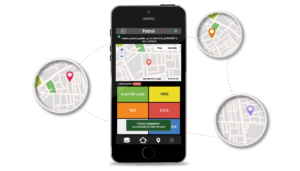
When to Call for Professional Tree Removal Services?
Trees are an important part of our environment, providing shade, oxygen, and aesthetic value to our homes and communities. However, when a tree becomes a hazard or a liability, it may be necessary to remove it.
Whether it is dead or dying, diseased, leaning, or causing damage to surrounding structures, it is essential to address the problem as soon as possible.
The process of tree removal can be dangerous, and it is essential to call for professional tree removal services for both safety and legal reasons.
Here we’ll talk about the signs to look for in Tree Removal in RI, the things to consider before removing a tree, and the steps involved.
Signs that Indicate a Tree Needs to be Removed
Dead or Dying Trees:
One of the most obvious signs that a tree needs to be removed is when it is dead or dying. A dead tree can pose a significant safety risk as it can fall or lose large branches without warning. If a tree appears to be dead, it is best to have it assessed by a professional tree removal service to determine if it needs to be removed.
Diseased or Infected Trees:
Another sign that a tree needs to be removed is when it is diseased or infected. A diseased tree may have discolored or wilted leaves, cankers, or other signs of decay. If a tree is infected with a disease, it can spread to other trees in the area and cause significant damage.
Leaning Trees:
A tree that is leaning significantly can be a sign that it is in danger of falling. A tree that is leaning can be caused by various factors such as soil erosion, poor root structure, or damage to the trunk. A tree that is leaning should be assessed by a professional tree removal service to determine if it needs to be removed.
Trees with Structural Damage:
Trees that have structural damage, such as a split trunk or broken branches, can also be a hazard and should be removed. Structural damage can occur due to severe weather, disease, or insect infestation. A tree with structural damage can fall or lose large branches, causing damage to property or injury to people.
Trees with Roots Damaging Foundations or Sidewalks:
Trees with roots that damage foundations or sidewalks are not only a liability but also an environmental hazard. The roots can cause cracks in sidewalks, driveways, and foundations, making them unstable and potentially dangerous. Removing such trees is crucial for the safety of the people and property around them.
Factors To Consider Before Removing A Tree
Location of the Tree:
The location of the tree is an important factor to consider before removing it. If the tree is located near a power line, building, or other infrastructure, it may be necessary to remove it to prevent damage or injury.
Size of the Tree:
The size of the tree is also an important factor to consider before removing it. A large tree may require specialized equipment and a larger crew to remove it safely. It may also have a greater impact on the surrounding environment.
Proximity to Buildings and Power Lines:
A tree that is located near a building or power line can cause significant damage if it falls or loses large branches. It may be necessary to remove the tree to prevent damage or injury.
Impact on Surrounding Vegetation:
The removal of a tree can have a significant impact on the surrounding environment, especially if it is a mature tree. The removal of a mature tree can affect the ecosystem and wildlife that depend on it.
Therefore, it’s important to consider the impact on surrounding vegetation before removing a tree. A professional tree removal service will be able to assess the impact and provide recommendations on how to minimize it.
Possible City Ordinances, Permits, and Regulations:
Before removing a tree, it is important to check with your local city regulations, permits, and ordinances.
Some cities have laws that protect certain types of trees, and it may be illegal to remove them. A professional tree removal service will be aware of these laws and regulations and can help you navigate the process.
The Tree Removal Process
Assessing the Tree:
Once it has been determined that a tree needs to be removed, the next step is to assess the tree.
A professional tree removal service will thoroughly assess the tree to determine the best course of action. This includes evaluating the tree’s size, location, and condition and the potential impact of removing it.
Planning and Preparation:
After the assessment, the tree removal service will plan and prepare for the removal. This includes identifying any potential hazards, such as power lines or buildings near the tree, and determining the best course of action to remove the tree safely.
Execution of the Removal:
Once the planning and preparation are complete, the tree removal service will execute the removal. This process may include cutting down the tree, removing the branches, and grinding the stump.
A professional tree removal service will use the appropriate equipment and techniques to remove the tree safely and efficiently.
Clean up and Disposal:
After the removal, the tree removal service will clean up and dispose of the debris. This may include removing the tree and branches from the property, grinding the stump, and restoring the area to its original condition.
Also Read: Ecommerce Website Design Services in Chicago
Conclusion
A professional tree removal service will be able to assess the tree, plan and prepare for the removal, execute the removal safely, and clean up and dispose of the debris. It’s also important to keep in mind the possible city ordinances, permits, and regulations when removing a tree.
Regular tree trimming and planting can help ensure the health and safety of your trees and prevent the need for removal in the future. Contact your local tree removal service to schedule an assessment and discuss your options.


